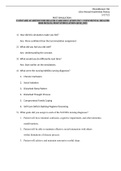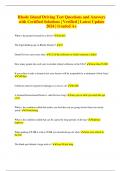Exam (elaborations)
Test Bank - Foundations of Mental Health Care 8th Edition by Morrison-Valfre, (All Chapters Included 1-33).
- Course
- Institution
- Book
TEST BANK Foundations of Mental Health Care Michelle Morrison-Valfre 8th Edition Table of Contents Chapter 01 The History of Mental Health Care Chapter 02 Current Mental Health Care Systems Chapter 03 Ethical and Legal Issues Chapter 04 Sociocultural Issues Chapter 05 Theories and Therapies Chapter...
[Show more]












